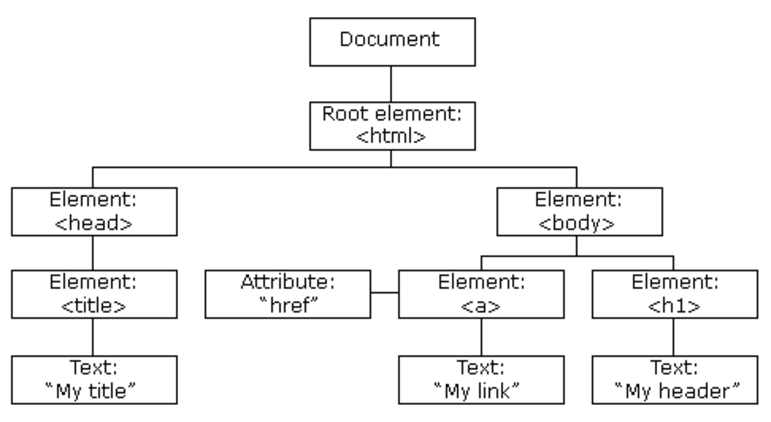
Is It Hard to Learn React?
Web development is a fascinating topic that is worth investigating, studying, and getting a grasp on. It provides a vast number of libraries and frameworks that can assist students in the development of web projects. There are multitudes of programming languages to learn, including React.
However, when it comes to choosing just one, it gets difficult to choose. React or React Native is quite a popular framework among mobile application developers. Today’s web development communities can’t get enough of it.
Knowledge of React can help developers tremendously. It is because more and more sites are now developed with React. Popular sites that are developed on React include Airbnb, Instagram, PayPal, Netflix, and so on.
This post is for you if you are considering getting started with ReactJS and are searching for a method that is broken down into steps. As we are going to walk you through a comprehensive learning plan for ReactJS in this post.
So, let’s dive in..
What Is React.js?
React, also known as ReactJS or React Native, is a user interface library that is open-source and built on JavaScript. It is managed by Facebook and an open-source development community. Although React is technically a library and not a language, it sees extensive use in building websites.
Since its release in May 2013 by Jordan Walke, this library has become one of the most popular front-end libraries for web development. For example, React is compatible with architectural add-ons like Flux and React Native.
The creators of React JS introduced it to the world as a JavaScript toolkit for creating user interfaces, and they prioritized making it easily available to developers.
Web designers and developers utilize the JavaScript framework known as React.js to simplify the creation of interactive elements. React is used to create both web pages and mobile applications. Learning React.js could offer you a leg up in the competitive field of computer programming.
Also, it’s worth noting that Facebook backs the entire React.js package, which naturally boosts its reputation and popularity. Being open-source and free to use, it provides developers with a wide range of freedom to experiment.
What Is React Used For?
React is an open-source UI library utilized for the purpose of developing interactive user interfaces and online apps in a quick and effective manner with a much-reduced amount of code compared to what is required when using standard JavaScript.
When developing apps using React, you do it by designing reusable components that are analogous to freestanding Lego blocks in terms of their functionality.
These components are the separate parts that make up a complete interface, which, once put together, constitutes the user interface for the full application.
The fundamental function that React serves in an application is to manage the view layer of the application in the same way that the V in the model-view-controller (MVC) paradigm does. It does this by delivering the most effective and time-saving rendering execution possible.
Instead of dealing with the entire user interface as a single unit, React.js encourages developers to break down large user interfaces into discrete components that may be reused. These components serve as the fundamental building blocks for the entire user interface.
The ReactJS framework accomplishes this by combining the speed and efficiency of JavaScript with a more efficient approach of manipulating the DOM. This allows the framework to render web pages more quickly and to produce web apps that are extremely dynamic and responsive.
React’s Features
When it comes to front-end app development, React is by far the most popular library due to its impressive set of capabilities. The most notable ones are detailed here.
JSX
In React, this phrase is used to discuss the visual design of the user interface. JSX allows you to create HTML frameworks in the same file as your JavaScript code. This, in turn, saves a lot of time.
const name = annexlogics;
const greet = <h1>Hello, {name}</h1>;The aforementioned code snippet demonstrates how JSX is integrated into React.
Virtual DOM
Virtual DOM or Document Object Model is React’s lightweight version compared to the Real DOM. Manipulating a real DOM is a lot slower than a virtual one. When the status of an object changes, Virtual DOM only updates that object’s representation in the real DOM.
Here is a Schematic Representation of a Website’s Document Object Model

XML and HTML documents are represented in DOM (Page Object Model) as a tree structure, with each node being an object that represents some aspect of the document.
Architecture
Model–View–Controller (MVC) is an architectural paradigm for separating the application layer into those three components. React is the ‘View’ in an MVC design, meaning it is in charge of the user interface.
The controller acts as an interface between the Model and the View. While the View is responsible for the application’s user interface logic.
React is much more than a UI framework. It also has a wide range of add-ons that extend its functionality to cover the whole architecture of a project. It supports server-side rendering and aids in the development of mobile applications.
In addition to other things, Flux and Redux can be used to expand React’s capabilities.
Data Binding
React’s one-way data binding keeps everything lightweight and modular. As a result of the one-way nature of the data flow, it is usual practice to create a React project in which child components are nested within parent components.
Illustration of data binding in only one direction

Debugging
One of the most essential features that React offers is debugging. Yes, React applications are simple and can be tested quickly. You can debug React components with the help of React developer tools browser extensions. These extensions make debugging with React much easier. All you have to do is to install React developer tools.

Using this tab, you can quickly investigate individual React elements.
Once you’ve gotten a handle on React’s fundamentals, you’ll be able to appreciate the framework’s many powerful capabilities fully.
Why React?
The popularity of the React front-end development framework has recently surpassed that of all other front-end development frameworks. Following are the reasons developers choose React over other frameworks:
- React makes it easier to construct dynamic web applications since it involves less writing and gives more capability than JavaScript. It makes creating static web apps much easier. Moreover, it can be used to develop applications for both the web and mobile platforms.
- React’s Virtual DOM results in quicker development of web apps. Virtual DOM analyses the previous states of the components and only updates the things in the Real DOM that have been modified, as opposed to the blanket approach taken by conventional web applications.
- React offers reusable components, which are the building blocks of any React application. These components include their own logic and controls, and they are able to be reused throughout the application. As a result, the amount of time needed to develop the application is cut down significantly.
- React utilizes unidirectional data flow. This indicates that developers typically enclose child components within their respective parent components when they are developing a React project. Since the data only moves in one direction, it is much simpler to debug faults and pinpoint exactly where a problem is occurring in an application.
These are the reasons React is so popular. However, if you’re interested in learning this framework, you will need to invest some time in order to become acquainted with the capabilities of React.
How Hard Is It to Learn React?
Undoubtedly, React is the most popular library among front-end developers, and the popularity of this library is steadily growing.
However, a common mistake that a lot of developers make is jumping directly into React without knowing the prerequisites. If you jump right into the React library, you’re going to have a lot of trouble not only while you’re learning it but also when you’re being interviewed about it.
Before you move on to understanding React JS, you will first need to become familiar with ES6, JSX, Babel, Package manager, basic JavaScript, and so on. Only when you have an understanding of the fundamentals of these frameworks will learning React become a breeze for you!
What Skills Do You Need to Learn React?
Top 6 Skills You Must Possess Before You Learn ReactJS
1. HTML and CSS
You must first understand HTML and CSS prior to learning React. You must know how to build a front-end application using HTML and CSS, as well as how to write semantic HTML tags, use classes, implement a CSS reset, write CSS selectors, use the box model, use flexbox, and write responsive web applications, including media queries.
2. JSX
You can think of it as an extension of the Javascript language’s syntax or the simplest approach to incorporating HTML into the scripting language. Before learning React, you should have a solid understanding of JSX.

3. JavaScript with ES6
You must have a solid command of JavaScript in order to understand React. Know that JavaScript is notoriously difficult to understand, and its tendency to overlook little mistakes can have serious consequences for your project if you don’t keep a close eye on it.
Before moving on to the more advanced versions, make sure you have a firm grasp of the fundamentals of JavaScript. Doing so will make learning JavaScript a cakewalk for you, which will open your door to React JS.
4. Babel
Babel is another concept that needs your attention. It acts as a compiler for JavaScript files that converts text that looks like HTML into the usual JavaScript objects.
It can reduce features from ECMAScript 2015+ (ES6+) or the most recent version of JavaScript (ES) to ES5 or traditional JavaScript. If you wish to learn React, you should have a firm grasp of JSX and Babel.
5. Package Manager (Node with Npm)
To get started with ReactJS, you’ll need to have a greater understanding of package manager. Packages in JavaScript contain all the files necessary for a module. There are two types of files in a package: package.json and JavaScript.
Node Package Manager (NPM) comes into play here by facilitating the distribution and management of JavaScript applications. NodeJs and Yarn are two options for managing such applications.
The NPM registry remembers which files were submitted. Anyone is free to send in these documents (packages or modules). In a nutshell, the NPM registry is where programmers may obtain the tools they need to create new programs.
You should be familiar with the NPM (Node package management) registry and the process of installing packages using NPM before making the switch to React.
6. Git and CLI (Command Line Interface)
A developer’s ability to use Git (version control) to upload their work to hosting services like GitHub, Bitbucket, and GitLab is another necessary skill. It helps developers keep track of and save different iterations of project files.
You need to have a solid understanding of how Git and other similar platforms for hosting code function. Similarly, you need to have a solid grasp of the command-line interface as you will use it for every action in React.
You’ll need to utilize CLI for a wide variety of tasks, including package installation, NPM use, react app development, and application execution. Therefore, it is crucial to get into the practice of utilizing CLI before moving on to learning React.
Let’s now move to the benefits of learning React. Here we go…
What Are the Benefits of Learning React.js?
Undoubtedly, with React, you can produce user interfaces that are both engaging and responsive. However, there are several other benefits that make ReactJS one of the most popular frameworks among developers.
Here we have rounded up the list of the top 6 benefits of learning React.js. Take a look…
1. It’s Simple to Understand
This library is very lightweight, and it focuses solely on the view layer of the application. Having an understanding of its fundamentals will help you create fantastic user interfaces.
2. It Offers Reusable Components
Components are the building blocks of React. A reusable component in React is an individual user interface (UI) element that may be repurposed in different contexts to create multiple unique UIs.
Each component has its own one-of-a-kind rendering philosophy and internal logic. Using these components will help you maintain a consistent appearance across your app and keep expanding to your codebase if you reuse these components.
In fact, organizing these components in a strategic manner will let you develop large apps with relative ease.
3. Virtual Document Object Model Help Optimize Performance
Web user interfaces that allow for excellent user interaction and require frequent view refreshes are prone to experiencing performance challenges on a regular basis. Using a memory-based virtual Document Object Model (DOM), React JS is able to circumvent performance limitations.
It works out the most efficient way to implement modifications while minimizing the number of times they need to be updated.
4. It Comes WIth Robust Testing Capacities
React’s testing capacities make React.js one of the most popular frameworks. Using React’s testing capacities, developers can evaluate how well an app performs on different devices.
5. It Has A Huge Community Support
Among the many advantages of utilizing React.js is the outstanding community support it has consistently received. React has a large global community of developers despite being maintained by Meta. The fact that there are so many qualified React.js developers all over the world is a major plus for any business using the framework.
6. Incremental Learning Process
Compared to other JavaScript frameworks, such as Angular.js, or Vue.js, React is the most intuitive choice. One of the most vital benefits of using React is its learning curve.
React.js is flexible, user-friendly, and well-supported by the community, which makes it the most beneficial framework.
The Conclusion
React.js is strikingly different from other frameworks like Angular.js. Learning React is not as hard as it seems, especially if you fulfill the prerequisite for the framework.
When it comes to creating excellent user interfaces, React.js has several benefits, including a large and supportive community, robust testing capabilities, increased efficiency, and so on.
All in all, React.js is a viable alternative for developing your app from the ground up. It’s easy, flexible, and user-friendly, which makes creating web and mobile apps a breeze.
We at Annexlogics have the best team of React developers. Get in touch with us, and we can go over how using React.js would help your undertaking.




